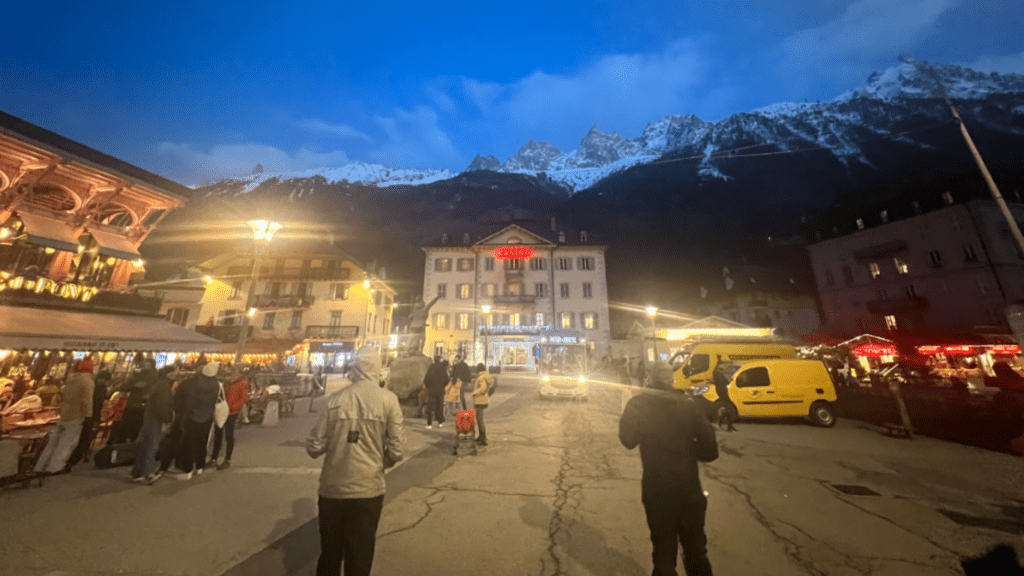Nestled in the picturesque landscapes of Chamonix lies a hidden gem for eco-conscious travelers like myself. Exploring the intersection of nature and sustainable tourism, I delve into the eco-friendly practices and initiatives that make Chamonix a beacon of responsible travel. From renewable energy projects to waste management strategies, this alpine paradise is paving the way for a greener future in the tourism industry.
As I navigate the winding trails and crystal-clear waters of Chamonix, I witness firsthand the harmonious coexistence of tourism and environmental preservation. Through a lens of sustainability, I uncover how local businesses, hotels, and tour operators are embracing green practices to minimize their ecological footprint. Join me on a journey to discover how Chamonix is leading the charge towards a more sustainable and environmentally conscious travel destination.
Sustainable Tourism in Chamonix: An Overview
Exploring the essence of sustainable tourism in Chamonix reveals a harmonious blend of environmental stewardship and visitor experiences. Let’s delve into the significance of eco-friendly practices and the current status of tourism in this alpine paradise.
The Importance of Eco-Friendly Practices
Embracing eco-friendly practices in Chamonix is pivotal for preserving its natural beauty and fragile ecosystems. Sustainable initiatives not only mitigate environmental impact but also enhance the overall quality of tourism experiences. By prioritizing green practices, Chamonix sets a standard for responsible travel that fosters long-term sustainability.
Current State of Tourism in Chamonix
The current state of tourism in Chamonix reflects a shift towards sustainable and mindful travel. Visitors are increasingly seeking authentic experiences that align with eco-conscious values. Local businesses, accommodations, and tour operators play a vital role in promoting sustainable tourism by implementing innovative eco-friendly solutions. This proactive approach not only benefits the environment but also ensures a vibrant and resilient tourism industry in Chamonix.
Major Sustainable Initiatives in Chamonix
I’ll delve into some of the significant sustainable initiatives in Chamonix that showcase the town’s commitment to eco-friendly practices and environmental conservation.
- Waste Reduction and Recycling Programs
Chamonix has implemented robust waste reduction and recycling programs to minimize the environmental impact of tourism activities. By prioritizing waste separation and recycling facilities, the town aims to reduce landfill waste and promote a circular economy. Local businesses and accommodations actively participate in these programs, encouraging visitors to engage in responsible waste management practices during their stay. - Energy Conservation Measures
In line with its sustainability goals, Chamonix has adopted various energy conservation measures to minimize its carbon footprint. The town invests in renewable energy sources such as hydroelectric power and solar panels to reduce reliance on non-renewable energy sources. Additionally, energy-efficient practices in accommodations and public spaces contribute to overall energy savings and environmental sustainability in Chamonix. - Preservation of Natural Habitats
Chamonix places a strong emphasis on the preservation of its natural habitats to safeguard biodiversity and protect fragile ecosystems. Through conservation projects and habitat restoration initiatives, the town ensures the sustainable coexistence of wildlife and tourism activities. By promoting responsible visitor behavior and establishing protected areas, Chamonix maintains the ecological balance essential for long-term environmental sustainability.
Community Involvement and Education

Moving forward, I’ll delve into how the local community in Chamonix actively participates in sustainability efforts and the educational programs available for tourists, contributing to the town’s eco-friendly ethos.
Local Engagement in Sustainability Efforts
Engaging the local community is vital in upholding sustainable practices in Chamonix. Residents, businesses, and organizations collaborate on various initiatives to minimize environmental impact and promote responsible tourism. For instance, community-led clean-up campaigns are regularly organized to maintain the cleanliness of natural areas and hiking trails. By involving locals in these efforts, Chamonix fosters a sense of ownership and stewardship among residents, ensuring the long-term preservation of its scenic landscapes.
Educational Programs for Tourists
Tourists visiting Chamonix have the opportunity to participate in educational programs that raise awareness about environmental conservation and sustainable tourism practices. Local tour guides often incorporate eco-friendly themes into their excursions, sharing insights on the region’s biodiversity, preservation challenges, and conservation strategies. Moreover, interactive workshops and seminars educate visitors on reducing their ecological footprint while exploring the natural wonders of Chamonix. These educational initiatives not only inform tourists about the importance of environmental stewardship but also empower them to make conscious choices that support the town’s sustainability goals.
Challenges to Implementing Sustainable Practices
Implementing sustainable practices in Chamonix faces several challenges that need to be addressed to maintain the delicate balance between tourism growth and environmental preservation.
Regulatory and Financial Hurdles
Navigating regulatory requirements and securing financial resources pose significant challenges to implementing sustainable practices in Chamonix. Compliance with environmental regulations often entails substantial investments in eco-friendly infrastructure and technologies. Additionally, obtaining funding for sustainability projects can be a complex process, requiring partnerships with governmental organizations, private investors, and community stakeholders. Overcoming these regulatory and financial hurdles is crucial to driving the adoption of sustainable initiatives in the region.
Balancing Growth and Sustainability
One of the key challenges in Chamonix is finding the equilibrium between tourism growth and environmental sustainability. As visitor numbers increase, there is a higher demand for accommodations, transportation, and recreational activities, putting pressure on natural resources and ecosystems. Balancing the economic benefits of tourism with the conservation of Chamonix’s unique landscapes requires strategic planning and collaboration among stakeholders. Sustainable development practices such as eco-friendly infrastructure, low-impact tourism activities, and responsible waste management are essential for ensuring that growth is sustainable and preserves the natural beauty of Chamonix for future generations.

 Charleson Youngoron
Is the visionary founder of Winder Sportisa, a company dedicated to excellence in the sports industry. With a passion for both sports and business, Charleson has combined his extensive knowledge and experience to create a dynamic organization that prioritizes community, integrity, and innovation. Under his leadership, Winder Sportisa has grown into a respected name, known for its commitment to creating an inclusive and supportive environment. Charleson's dedication to these core values has been instrumental in shaping the company's culture and guiding its success. His forward-thinking approach and unwavering commitment to quality continue to drive Winder Sportisa to new heights.
Charleson Youngoron
Is the visionary founder of Winder Sportisa, a company dedicated to excellence in the sports industry. With a passion for both sports and business, Charleson has combined his extensive knowledge and experience to create a dynamic organization that prioritizes community, integrity, and innovation. Under his leadership, Winder Sportisa has grown into a respected name, known for its commitment to creating an inclusive and supportive environment. Charleson's dedication to these core values has been instrumental in shaping the company's culture and guiding its success. His forward-thinking approach and unwavering commitment to quality continue to drive Winder Sportisa to new heights.
